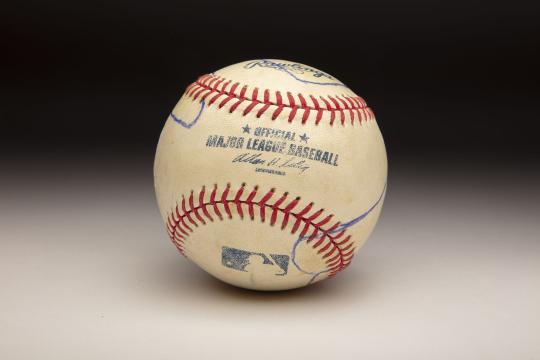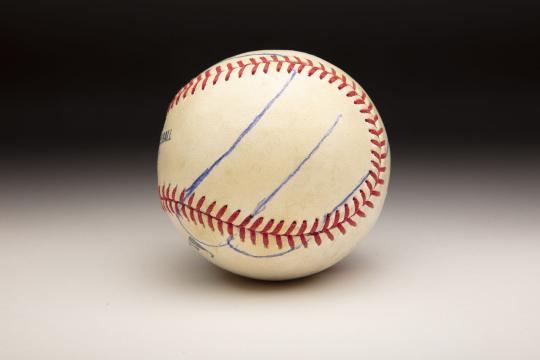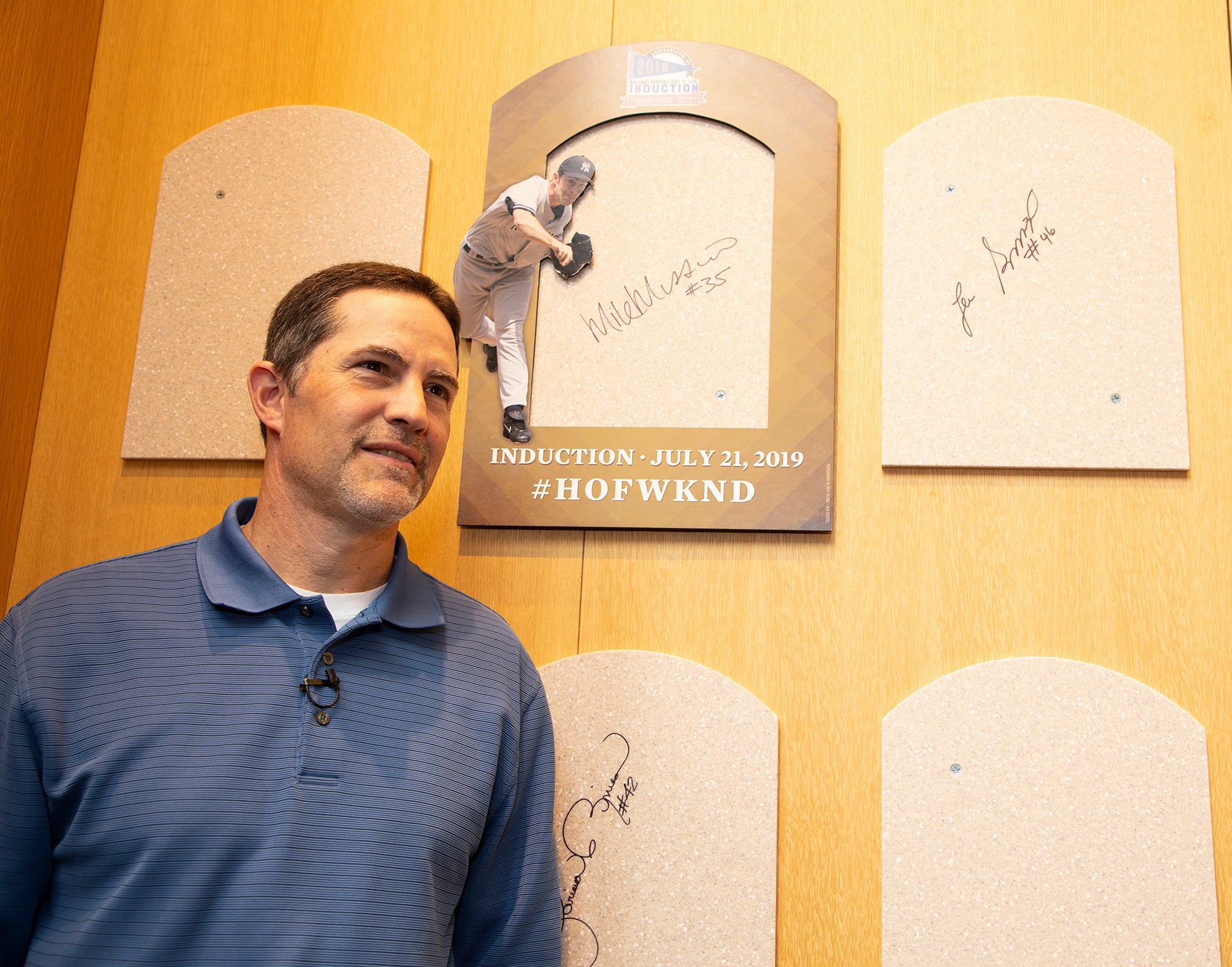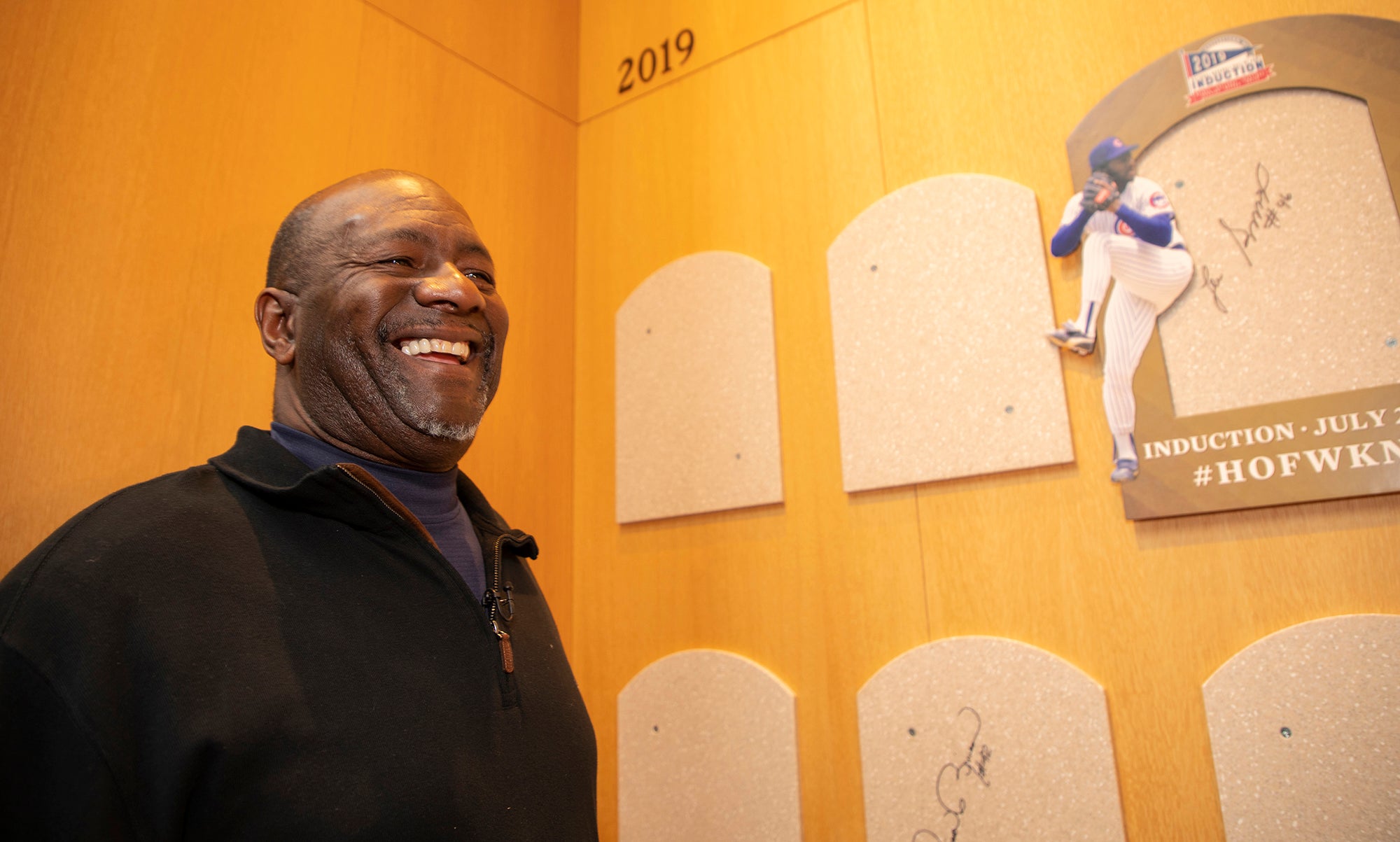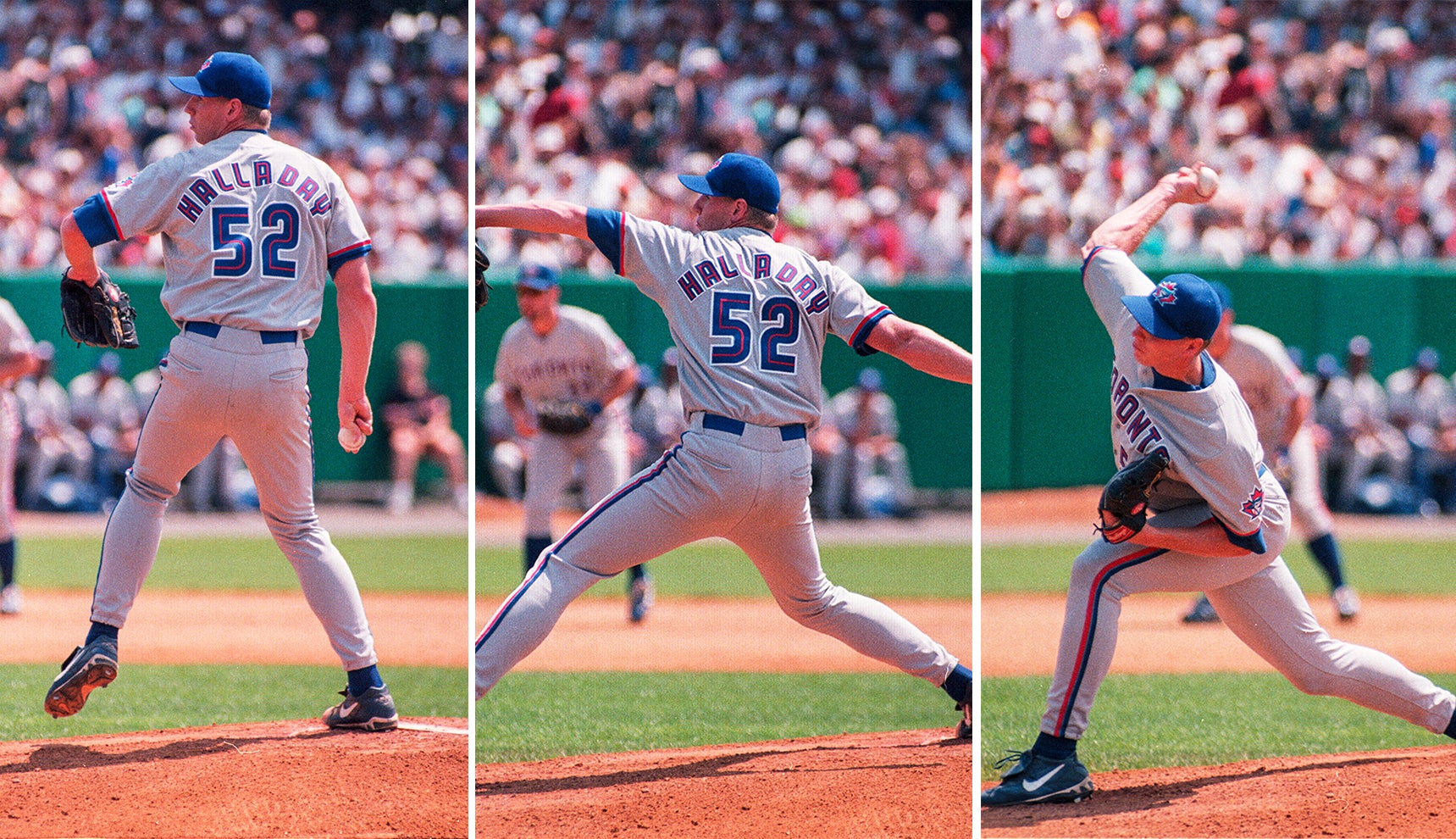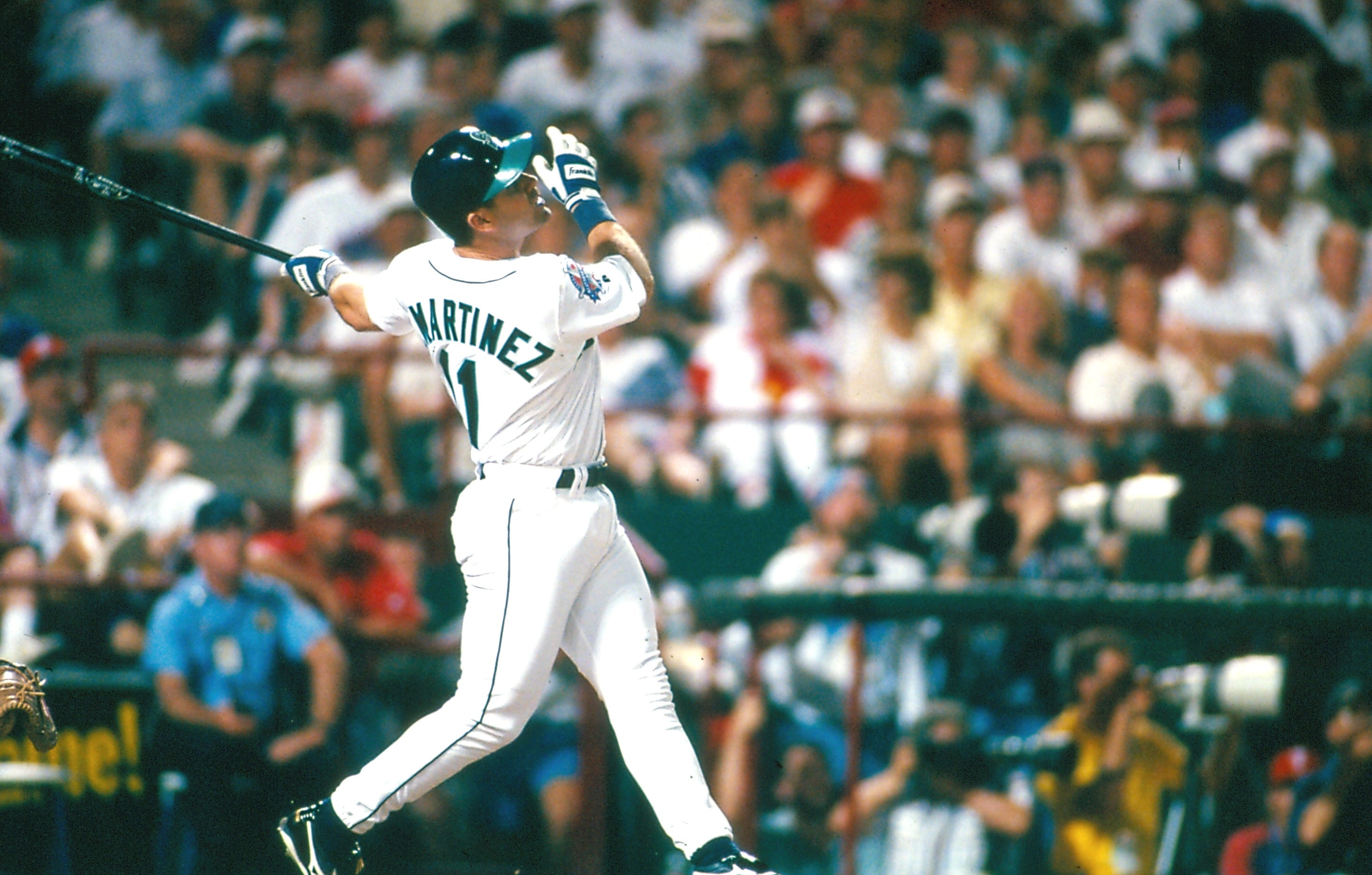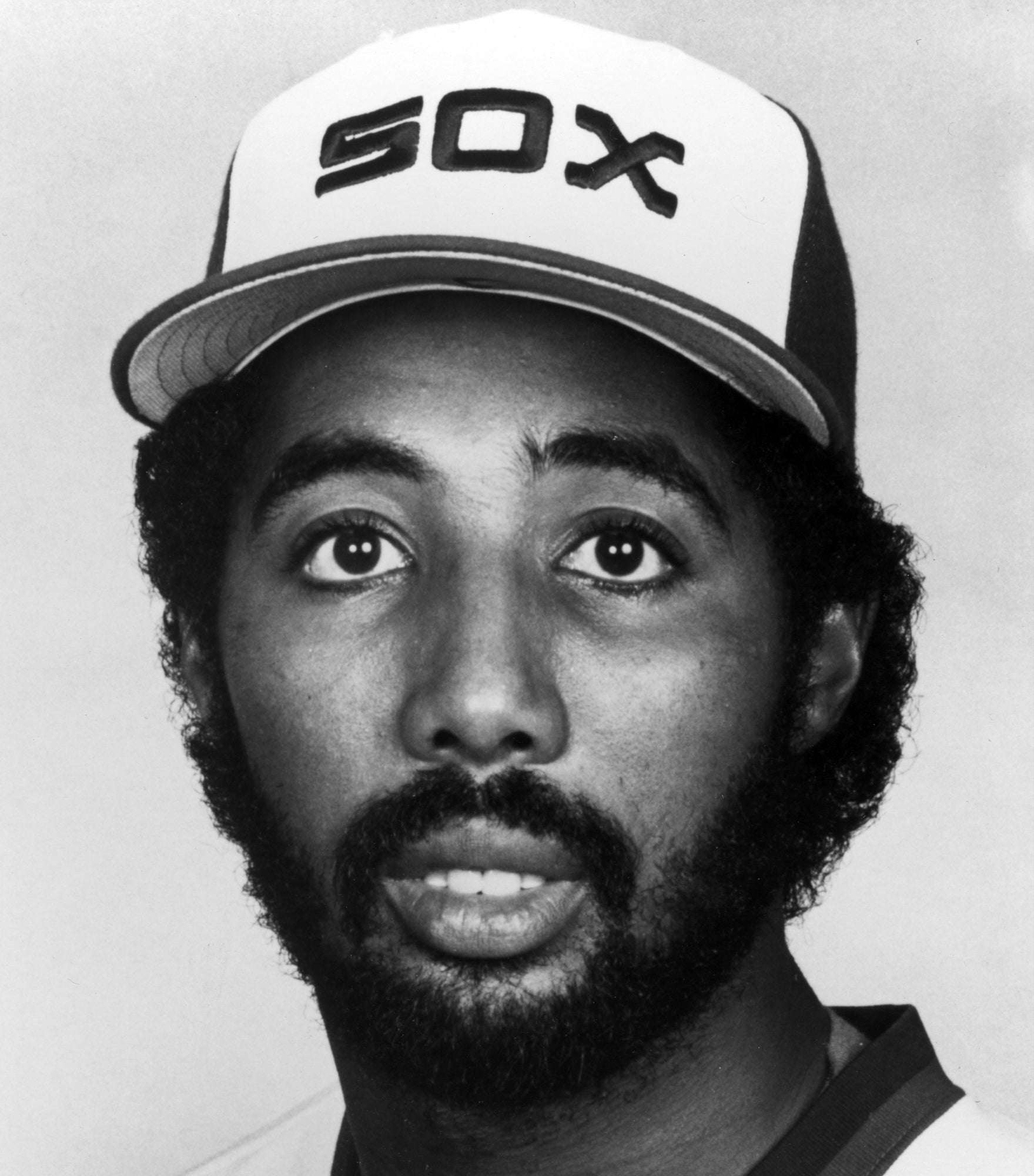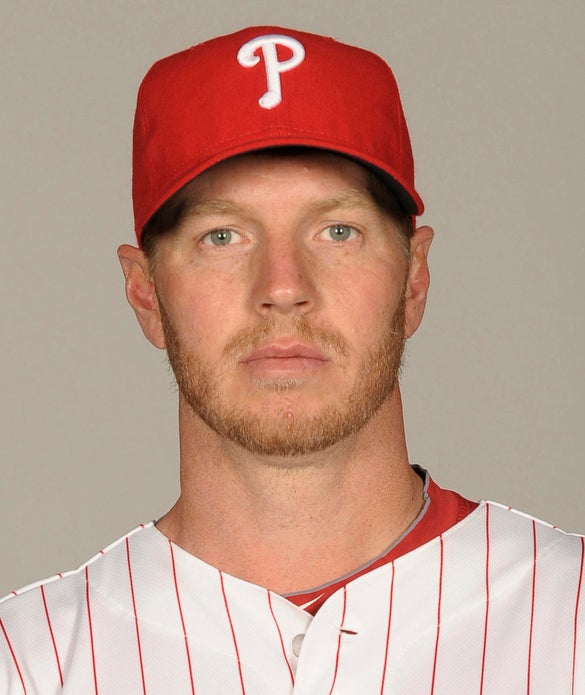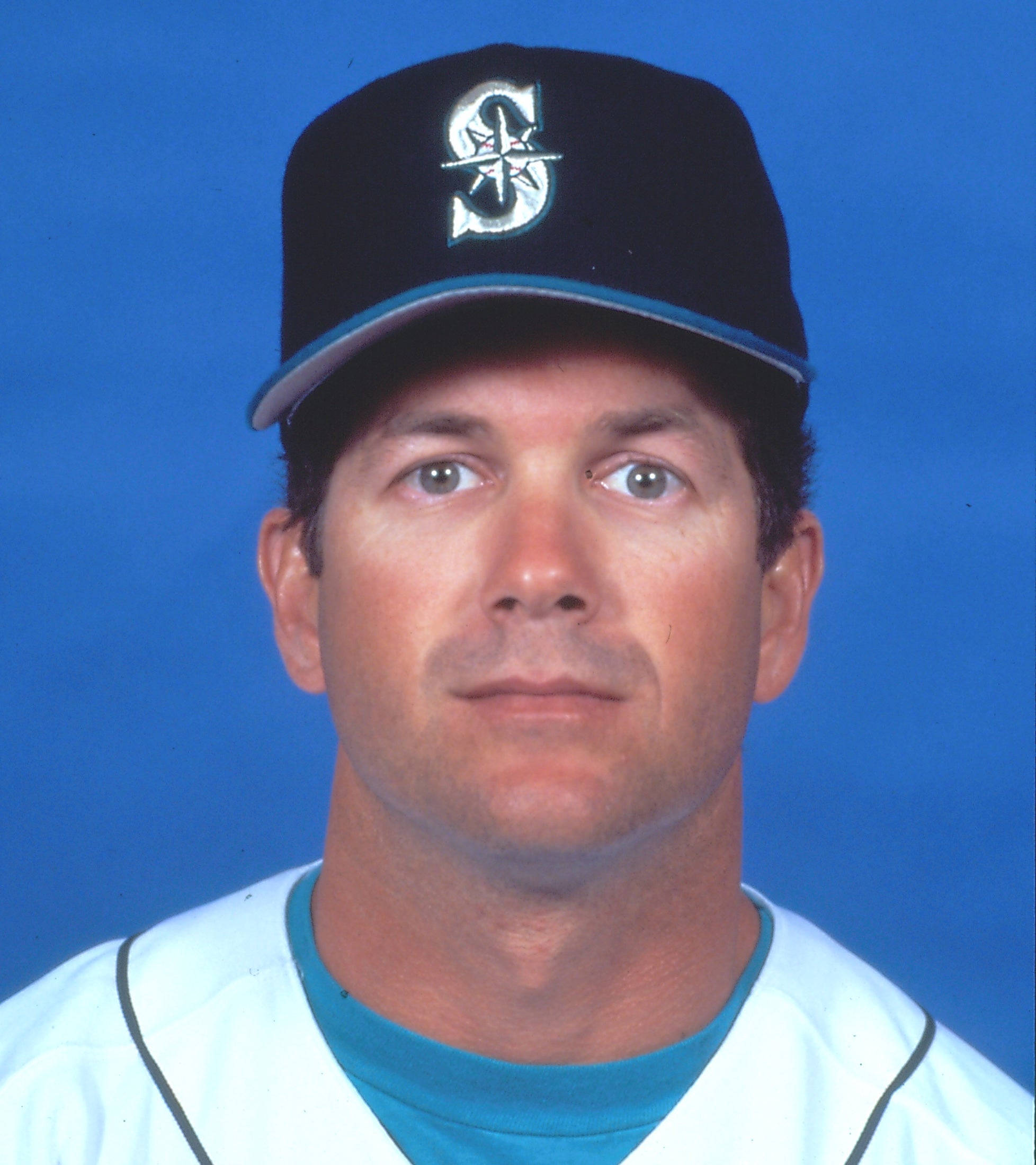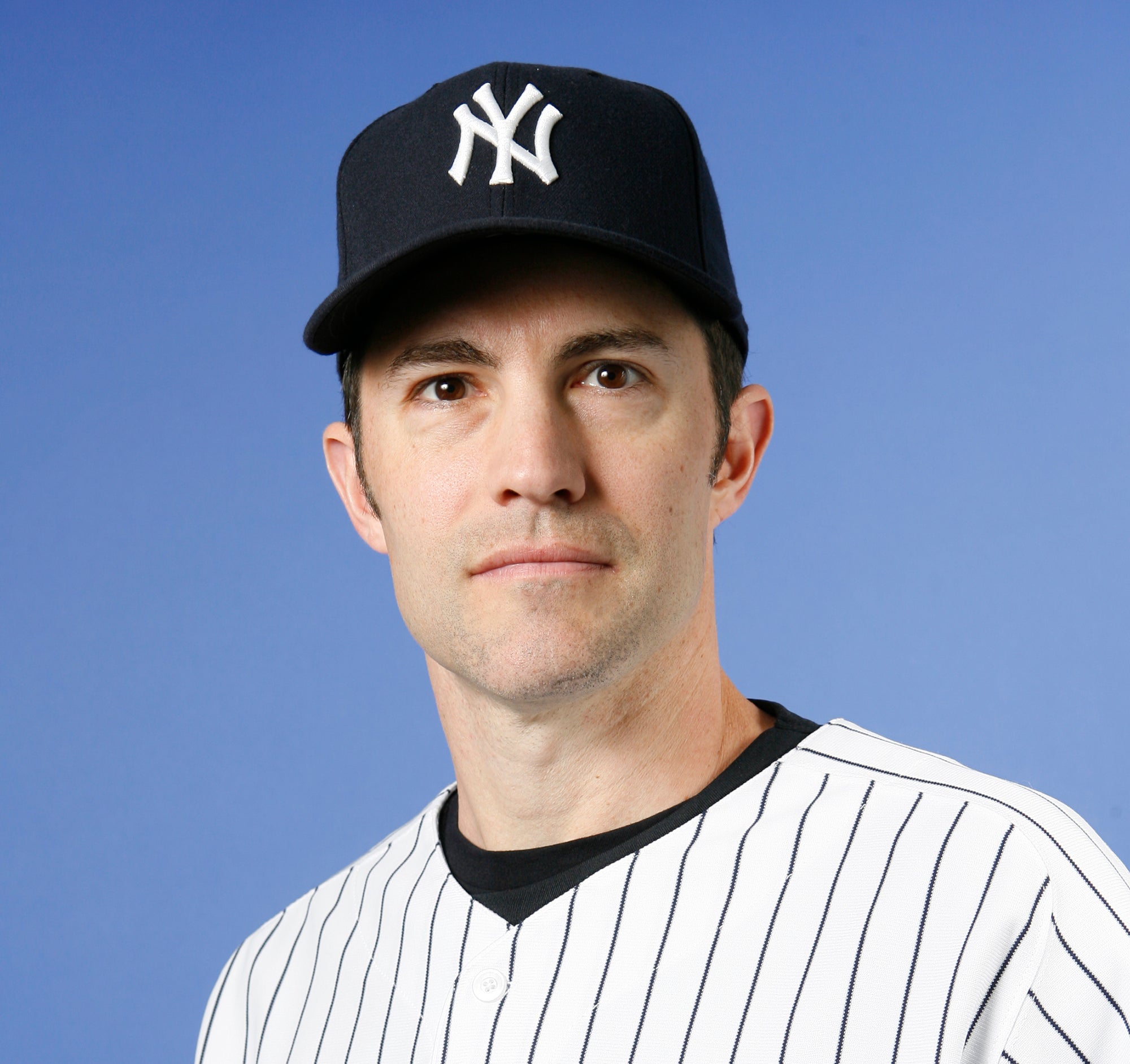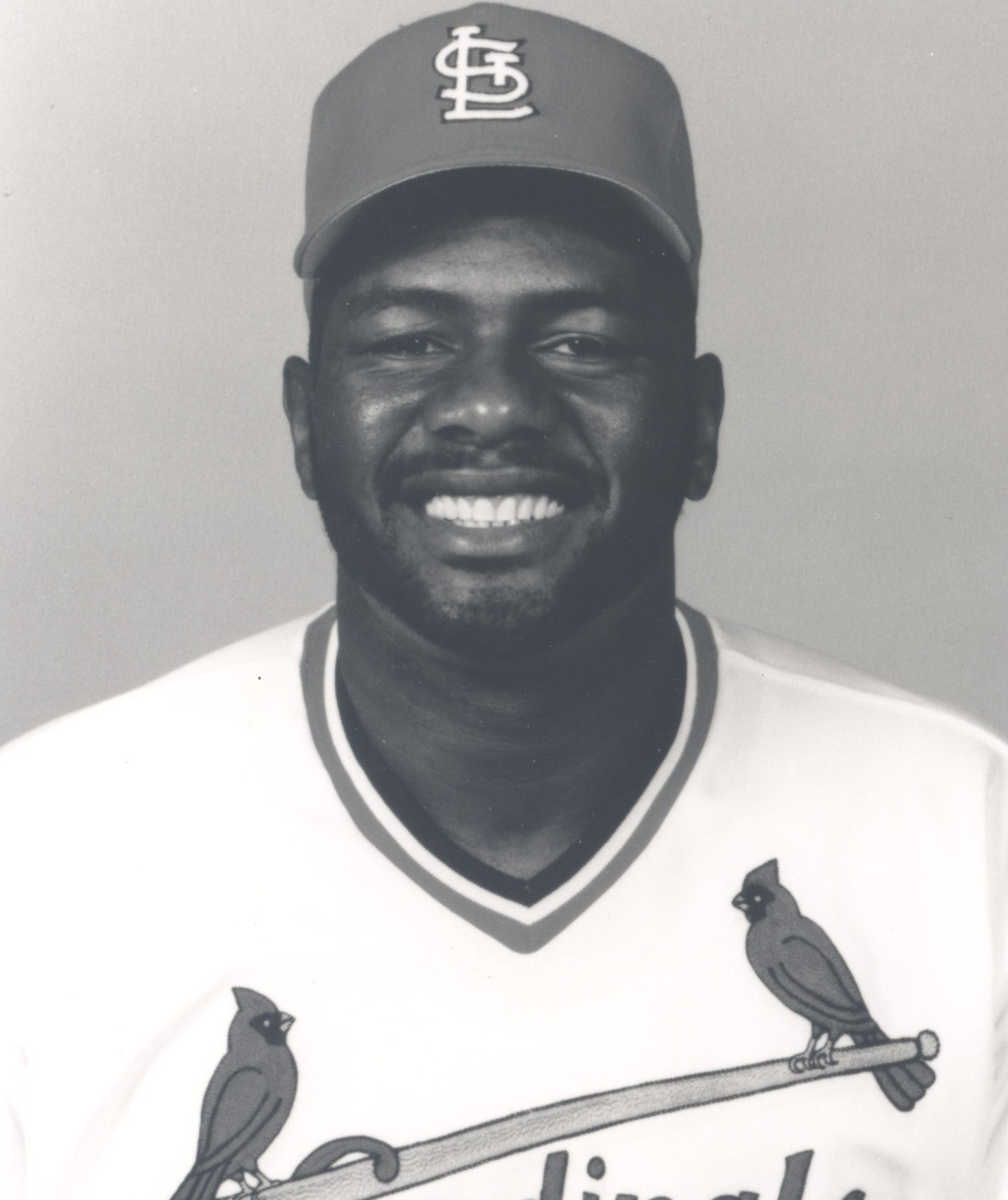- Home
- Our Stories
- One baseball connects two 2019 Hall of Fame inductees
One baseball connects two 2019 Hall of Fame inductees
On a seemingly ordinary baseball, blue ink forms an outline.
The index and middle finger are traced across the ball’s laces, while an outline for the thumb and side of the ring finger extends to the opposite side.
Small letters handwritten on the ball read “cutter grip,” identifying the pitch the outline forms.
But this is not just any cutter. This cutter perplexed major league hitters for decades and also intertwines two 2019 inductees of the National Baseball Hall of Fame. While the ball, which is on display in the 2019 Inductees Exhibit in Cooperstown, belonged to the late Roy Halladay, the grip is that of legendary closer Mariano Rivera.
Hall of Fame Membership
There is no simpler, and more essential, way to demonstrate your support than to sign on as a Museum Member.
Official Hall of Fame Apparel
Proceeds from online store purchases help support our mission to preserve baseball history. Thank you!
Rivera, who in January 2019 became the first player unanimously elected to the Hall of Fame, was a dominant closer for 19 seasons with the Yankees thanks in large part to one pitch. Hitters knew his cut fastball was coming, and yet there still wasn’t much they could do about it.
Rivera’s cutter carried him to 652 saves, 952 games finished and a career ERA of 2.21. He was especially dominant in the postseason, with an 8-1 record and a 0.70 ERA in 141 postseason innings. With a pitch so effective, one might assume Rivera would be reluctant to divulge any of his secrets.
But it was his sharing of expertise that connected him to one of his fellow inductees.
At the All-Star Game on July 15, 2008, Rivera and Halladay stood in the outfield at Yankee Stadium, immersed in conversation. Rivera held a baseball, demonstrating a grip to his American League East rival Halladay, then a member of the Toronto Blue Jays.
The two later revealed they were discussing cutter grips. During the exchange, Rivera showed Halladay how he grips the pitch that perplexed so many throughout his Hall of Fame career.
“In 2008, Halladay and myself, we were talking in the outfield about pitching,” Rivera said in a press conference on Jan. 23 after he was elected to the Hall of Fame. “We always talked about pitching. I was teaching him the grip of the cutter.”
While plenty of major league pitchers throw cutters, Rivera’s was distinct. When he gripped the ball, his thumb wrapped under the baseball, and rather than lining up with the index finger, his thumbnail aligned with the middle finger.
Halladay wanted to remember exactly how Rivera gripped the pitch, so he traced it in pen onto a ball that he could keep with him and refer back to at any time.
“I’d keep it in my locker, and when we’d go on the road, I put it in my travel bag,” Halladay told The New York Times. “Stuck it in a shoe, wherever I went, and if I was struggling, I’d just pick it up. I carried it the rest of my career.”
Immediately after the 2008 All-Star Game, Halladay went on to dominate Rivera’s Yankees in the second half. He secured three wins in three appearances against New York after the All-Star Break, including a complete game in his last start of the season on Sept. 25 at Rogers Centre. Rivera’s teammates weren’t thrilled about Halladay’s success and fined their closer in kangaroo court for sharing his secrets with a division rival.
“Actually (Halladay) was throwing the pitch, and Derek (Jeter) and all the hitters from my team were mad at me,” Rivera said. “Halladay was so good against us, and they blamed me. I said, ‘You guys didn't hit the ball, not me.’”
Halladay’s cutter developed into one of his most well-known pitches, which powered him through the later years of his career when he cemented his Hall of Fame resume.
He already threw a cutter before 2008. According to FanGraphs, he threw the pitch 25.2 percent of the time in 2007. But after that 2008 All-Star Game, his usage of the pitch increased significantly. In 2008, he used it 33.2 percent of the time. In 2009, that figure was up to 41.5 percent, and it reached a peak in 2011 at 44.8 percent.
“For me when I faced (Halladay), what I remember is the movement of the ball,” fellow 2019 inductee Edgar Martinez said. “He could move it in two directions. He could sink really hard, would use both sides of the plate, and also would cut it, and he (would) throw a breaking ball, too.”
Halladay’s success didn’t come easily. The 17th overall pick in the 1995 MLB Draft, Halladay was a highly-regarded prospect from the start.
He made it to Toronto as a late-season call-up in 1998, but after struggling in 1999 and 2000, he was sent all the way down to Class A Dunedin, where he reinvented himself before returning to the big leagues later in the 2001 season.
Arguably three of the best seasons of Halladay’s career followed that 2008 exchange with Rivera.
His ERA remained under 3.00 for the next three years, and in his first season with the Philadelphia Phillies in 2010, he led MLB in innings pitched and wins, threw two no-hitters (one a perfect game) and captured his second Cy Young Award. He finished his career in 2013 with a 3.38 career ERA, 67 complete games, 2,117 strikeouts and a record of 203-105.
Through it all, the ball with Rivera’s cutter grip traced on it stayed with Halladay wherever he went. If he couldn’t find the right grip, he would refer back to it and discover what was wrong.
Now, it seems only fitting that the two will be inducted into the Hall of Fame together on July 21, as Halladay is recognized for his competitiveness and durability as a starting pitcher and Rivera for his consistency and dominance as a closer. The ball that links the two first-ballot Hall of Famers is featured among many other artifacts commemorating the Class of 2019 in the Museum’s Inductees Exhibit, which features artifacts from all six members of the Class of 2019, including Harold Baines, Mike Mussina, Lee Smith, Halladay, Martinez and Rivera
“It’s not a game-used artifact. It’s a teaching tool, so it’s like a personal memento that somebody saved,” said Erik Strohl, the Hall of Fame’s vice president of exhibitions and collections. “That’s really a unique story all around. I can’t recall any artifact quite like that one that we received.”
The baseball is on loan to the Museum for the exhibit, which is located on the Museum’s third floor.
“(The ball) has nothing to do with an on field event or a milestone or something they achieved,” Strohl said. “Those hidden stories are often the coolest and neatest ones, because we don’t know about them. Now, we’re going to get to share that.”
In addition to the traced cutter ball, Halladay’s display includes, among other artifacts, a Phillies cap he wore when he threw a perfect game in May 2010 and his two Cy Young Awards from 2003 and 2010.
Highlights from Baines’ display include the ball he hit for his 1,000th RBI in 1992 and the Outstanding Designated Hitter Award he was given in 1987.
Martinez’s display features the Roberto Clemente Award he earned in 2004 and a jersey from his final game in the major leagues, among other artifacts.
Some of the artifact highlights commemorating Mussina include a New York Yankees cap from his final game and his Gold Glove Award from 1996.
Rivera’s display features a pair of shoes from the Yankees’ sweep of the Braves in the 1999 World Series as well as his five World Series rings from 1996, 1998, 1999, 2000 and 2009.
Smith’s display includes a glove from 1991, when he led the major leagues with a career-high 47 saves for the Cardinals, among other artifacts.
The exhibit includes artifacts from throughout each inductee’s life, chronicling not just their major league careers but their amateur and minor league careers as well.
“We love having things that go back to Little League if they’ve got it, or high school or college,” Strohl said. “That’s important in terms of the development of these guys, so I think that’s pretty neat.”
The exhibit will be on display until spring 2020, and also features a highlight video that tells the story of the six newest Hall of Famers. Admission to the exhibit is included with regular Museum admission.
“It is one year where they’re going to be the star attractions in terms of individual Hall of Famers’ stories,” Strohl said.
Janey Murray was the 2019 public relations intern in the Hall of Fame’s Frank and Peggy Steele Internship Program for Youth Leadership Development

